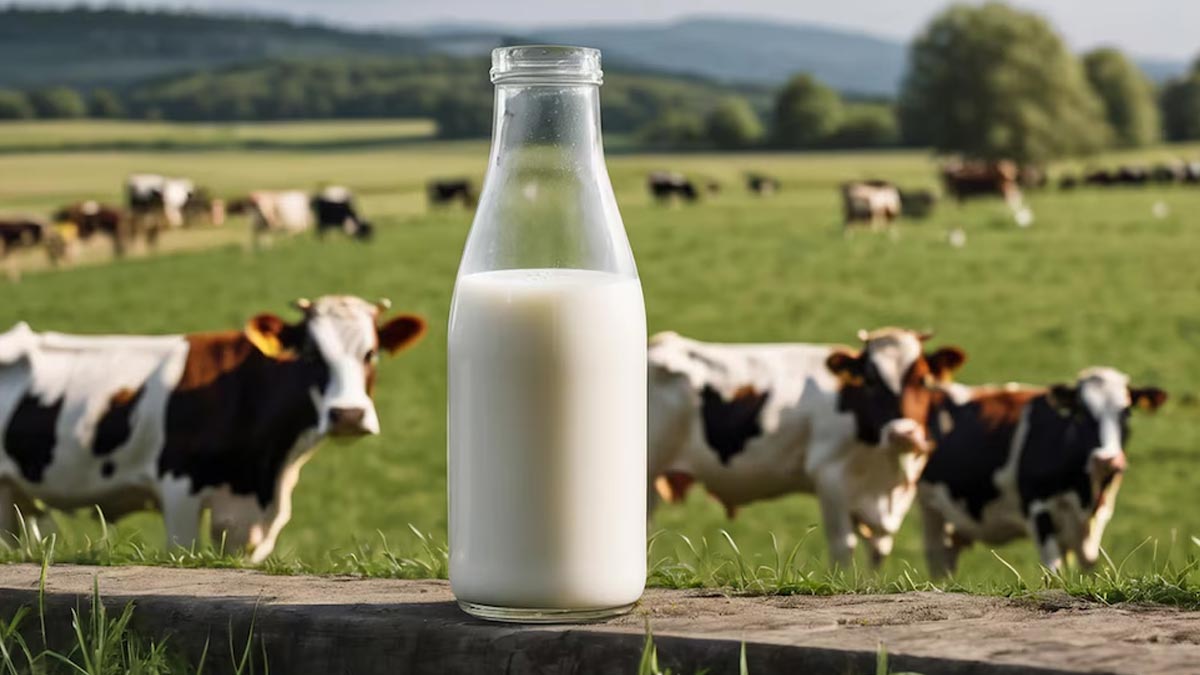
The United States (US) is witnessing a widespread surge in bird flu among their dairy cattle population, with the number of affected states increasing from 6-8 in the last three weeks. What's troubling is that the World Health Organisation has found that the presence of bird flu or avian influenza virus in raw milk obtained from infected cows, while US federal authorities announced on Wednesday the detection of the virus in lung tissue from a seemingly healthy cow.
Table of Content:-
In addition, US officials disclosed during a media briefing on Wednesday that genetic material from the H5N1 strain, responsible for the outbreak, had been identified in milk products available for sale. This is exceptionally concerning because H5N1 has the capacity to infect humans, and if it is present in commercially available milk, that means trouble for us.
In the light of this development, experts have been recommending the masses to drink pasteurised milk.
What is Pasteurised Milk?
The International Dairy Foods Association defines pasteurisation as a heat treatment process that involves heating milk to a specific temperature for a set period and then rapidly cooling it. This process was developed by Louis Pasteur in the 19th century to kill harmful bacteria and pathogens present in raw milk, making it safer for consumption.

Pasteurised Milk Health Benefits
Here are some of the reasons that could compel you to opt for pasteurised milk over regular milk:
Safety from Harmful Bacteria
The primary benefit of pasteurised milk is the elimination of harmful bacteria such as Salmonella, E coli, and Listeria. Pasteurisation destroys these pathogens, reducing the risk of foodborne illnesses associated with consuming raw milk.
Extended Shelf Life
Pasteurised milk has a longer shelf life compared to unpasteurised milk. The heat treatment process helps slow down the growth of spoilage bacteria, allowing pasteurised milk to remain fresh for a longer period, which reduces food waste.
Accessibility and Availability
Pasteurised milk is widely available in supermarkets, grocery stores, and convenience stores, making it easily accessible to consumers. This accessibility ensures that individuals can obtain safe and nutritious milk products without concerns about the safety of raw milk. Moreover, you can easily pasteurise your milk at home. Now do you understand why your mom always told you to boil the milk before consuming it?

Suitable for Vulnerable Populations
Pasteurised milk is especially beneficial for vulnerable populations such as young children, pregnant women, older adults, and individuals with compromised immune systems. These groups are at higher risk of severe illness from foodborne pathogens, making pasteurised milk a safer choice for their dietary needs.
Versatility in Culinary Use
Pasteurised milk is versatile and suitable for various culinary uses, including cooking, baking, and making dairy products such as yoghurt, cheese, and ice cream. Its safety and consistent quality make it a preferred ingredient in food preparation.
Also Read: How To Drink Milk If You Are Lactose Intolerant? Expert Shares Tips To Manage This Condition
Considerations with Unpasteurised Milk
While some advocates of unpasteurised milk claim potential health benefits, such as retaining natural enzymes and probiotics, it's essential to weigh these perceived benefits against the risks of consuming raw milk. Unpasteurised milk can harbour harmful bacteria that pose serious health risks, especially for vulnerable individuals.
The benefits of pasteurised milk, including safety from harmful bacteria, extended shelf life, accessibility, consistency in quality, suitability for vulnerable populations, and culinary versatility, make it a preferred and recommended choice for us consumers. Making informed decisions about milk consumption involves prioritising safety and considering the potential risks associated with consuming unpasteurised products. So, choose wisely!
Also watch this video
How we keep this article up to date:
We work with experts and keep a close eye on the latest in health and wellness. Whenever there is a new research or helpful information, we update our articles with accurate and useful advice.
Current Version